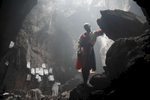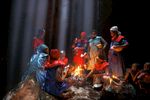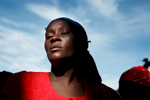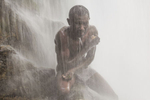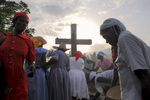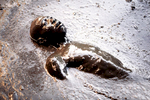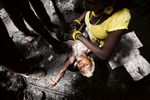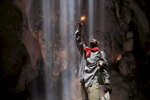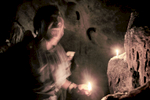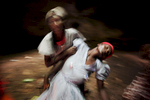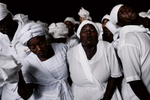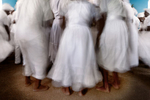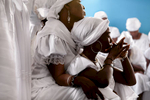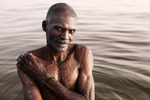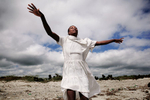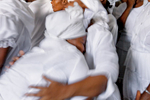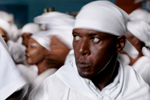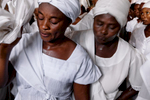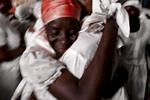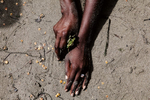THE SACRIFICE, Haitian Vodou
The full moon rises above the caverns of central Haiti, in the mountains high above the rural village of St. Michel de l'Attalaye. Songs of prayer and worship invoke the powers of the ancestral spirits, les Mysteres, of Haitian Vodou.
Misunderstood and maligned, Haitian Vodou is ancestor worship that provides a living connection with the psychic heritage of a people and place torn apart during the colonial slave trade. The inheritance of these ancestral spirits or lwa, provide the foundation for Haitian Vodou.
Derived from the Dahomey word meaning spirit, Vodou originates from West African religious traditions of animism. It embraces the elemental forces of nature: earth, fire, water. These are reflected in their ceremonies in which through trance they seek the crossroad between the material and spiritual realm in order to gain access to mait/tete, the divine ancestral spirits.
Spirit is not seen as a vague, mystical evanescence, but rather intelligence, energy, a repository of moral knowledge. Rituals of birth, initiation, death and sacrifice are theatrically performed. The spiritual principles behind these rites are rekindled through this sacred performance.
In my own work I was not documenting a particular religion, but instead the great depth of cathartic human emotion possible in its desire for transcendence. For the devotional ceremonies are always in measure to the difficult existence found in Haiti. In this way, Haitian Vodou is an act of affirmation in the face of hellish adversity. The vital spirit of Vodou that has lasted centuries of persecution defines the human foundation that is left when almost everything else has been taken. It is my intention to bring this strength to light.

